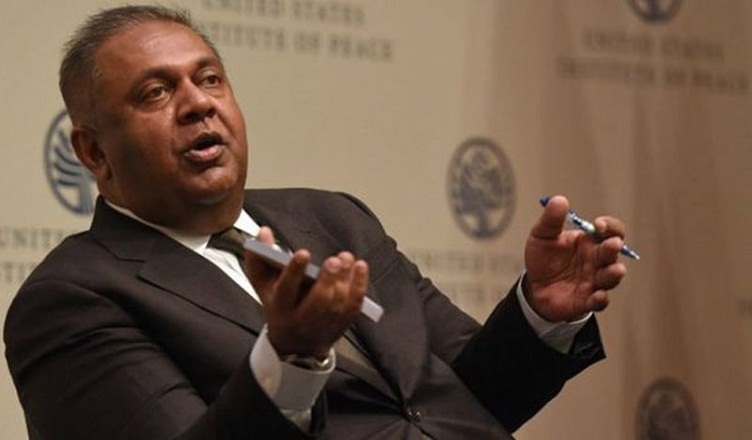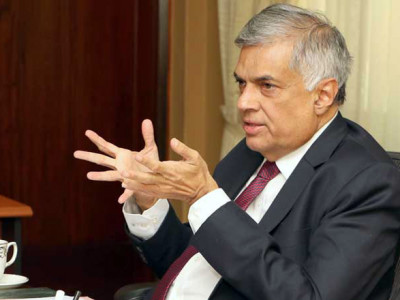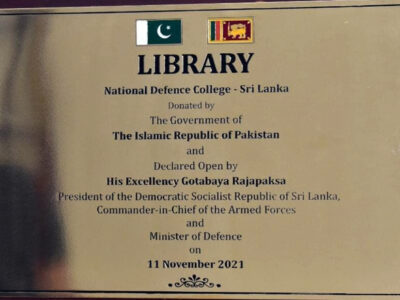(COLOMBO, LANKAPUVATH) –Finance and Mass Media Minister Mangala Samaraweera challenged Kurunegala District MP, Mahinda Rajapaksa to a public debate on the country’s current debt and economic situation.The minister who completed one year since taking over the ministry said he won’t bring up the corruption and other crimes.“As a former Finance Minister himself, he should be able to debate this with me.
“The economy has come a long way since he was Finance Minister”, Samaraweera said addressing a media briefing at the Ministry yesterday. Refuting allegations made by Rajapaksa on the country’s debt, the Finance Minister stated in the next 12 years, the majority of loan repayments came from loans taken before 2015.
In 2019, the government will face a Rs 4.2 trillion in debt repayment, 77 percent are loans from the Rajapaksa era. Of this, Rs 970 billion was only taken after 2015 and 48 percent was to repay earlier loan installments, he explained. In 2020, the government will have loan repayments to the tune Rs 3.7 trillion (77 percent from the Rajapaksa era) and in 2021, it will have to pay Rs 3.4 trillion in repayments (83 percent from the Rajapaksa era).
The minister noted that his government had also faced a continuous drought and other disruptions to government but they have also scored many an economic victory in the last three years. The Opposition has been harping about an unbearable cost of living and people have started to believe this lie told so many times. But in reality, the cost of living today is much less compared to that of 2014 (during the Rajapaksa regime), the minister said. He noted that the price of diesel, petrol and gas was much lower than during the Rajapaksa regime. In the first 100 days of the Yahapalanaya government, the salaries of government servants were increased substantially- to be specific, a 107 percent increase will be seen by 2020 (when compared to 2014).
The Minister went on to further highlight the prices of essentials such as: white rice from Rs 78 in 2014 to Rs 80 in 2018, white nadu from Rs 88 in 2014 to Rs 90 in 2018, flour to be Rs 97 in 2014 to Rs 89 2018, price of potato from Rs 108 to Rs 100 in 2018, Big onion from Rs 90 in 2014 to Rs 85 in 2018, dhal from Rs 170 in 2014 to Rs 145 in 2018, a can of tuna from Rs 230 in 2014 to Rs 228 in 2018. Sprats however increased from Rs 504 in 2014 to Rs 750 per kilo in 2018.
“Some have increased slightly but most when compared to earlier have not increased”. The minister said over the last three years they have laid a strong foundation for a vibrant economy. Government tax revenue in 2014 stood at 10.3 percent was increased to 12.6 percent in 2017. In 2017, overall government earnings rose to 13.8 percent. Government expenditure in 2017 was brought to a manageable 19.4 percent and since 1992 for the first time in 2017, the budget primary balance reported a surplus.
“The Government will be able to hereafter cover all recurrent expenditure on its own”. 2017 was also the year with the 4.2 percent unemployment rate, the second lowest rate in history. The government has also increased the Samurdhi expenditure from 3.1 in 2014 to 3.4 at present. “In 2018, we were able to obtain the status of an upper middle income country. With a per capita income of USD 4,065”, said the minister.
“The Poverty Index in 2012 which was at 6.7 percent was also reduced to 4.1 percent in 2016.We scored these victories with a heavy debt burden,” Minister Samaraweera said. He said the government hoped to increase the allocation for education to 6 percent of GDP by 2025 and health expenditure to 3.5 percent of GDP in the next few years




